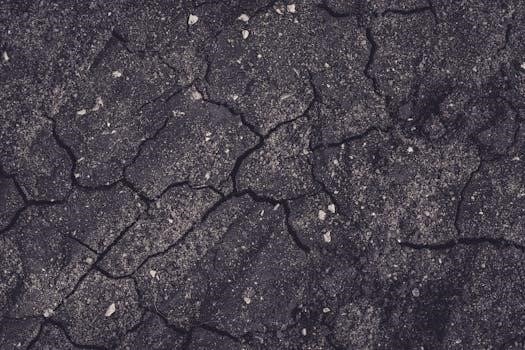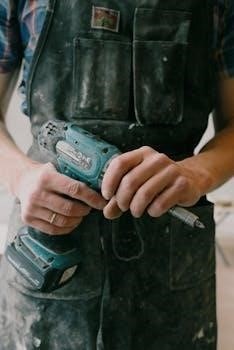Earthquake drills are crucial for preparing individuals and communities for the event of seismic activity. These practice sessions help people learn how to react safely during an earthquake, which may reduce injuries. Drills help to improve preparedness.
Importance of Earthquake Preparedness
Earthquake preparedness is paramount due to the unpredictable nature of these natural disasters. Being prepared is key to surviving an earthquake, involving not just knowing what to do during the shaking, but also in planning and implementing safety measures beforehand. Practicing earthquake drills helps individuals develop muscle memory for protective actions like ‘Drop, Cover, and Hold On’, reducing panic and confusion during a real event. Preparation includes securing spaces by identifying hazards, creating disaster plans, and having emergency supplies ready. Moreover, community-wide drills, such as the Great ShakeOut, foster awareness and encourage collective responsibility. It is very important for everyone in all communities to practice preparedness, plan ahead of time and be able to survive a possible earthquake.

The Core Action⁚ Drop, Cover, and Hold On
The ‘Drop, Cover, and Hold On’ technique is a core safety action during earthquakes. It is recommended by experts as the most effective way to reduce injury during shaking.
Detailed Explanation of Drop, Cover, and Hold On
The first step, Drop, means to immediately drop to the ground, getting down on your hands and knees before the earthquake can knock you down. Next, Cover involves finding shelter under a sturdy table or desk if one is nearby. If not, move next to an interior wall away from windows. The final step, Hold On, requires you to hold onto your shelter or stay in your position until the shaking stops. Do not run outside or go to a doorway. Stay in place and protect your head and neck. This action is vital for safety in most situations during an earthquake.
Why Drop, Cover, and Hold On is Recommended
The “Drop, Cover, and Hold On” method is recommended by experts such as official rescue teams and emergency preparedness organizations as the most effective way to protect yourself during earthquake shaking. This action reduces the risk of being struck by falling objects or being thrown around by the shaking. It is safer than attempting to run outside, which puts you at risk of debris and broken glass. Doorways, once considered safe, are no longer the safest place to be. Staying low to the ground and finding a sturdy object or wall for cover is the most reliable way to prevent injuries in an earthquake.

Implementing Earthquake Drills
Implementing earthquake drills involves a planned process to ensure effective practice of safety measures. These drills are vital in educating individuals on how to respond during seismic events. Regular drills improve reaction time.
Steps of a Typical Earthquake Drill
A typical earthquake drill begins with an alarm, signaling everyone to take immediate cover. Participants should move away from windows and seek shelter under desks or sturdy tables. The primary action during the shaking is to drop to the ground, take cover, and hold on. If no sturdy shelter is available, move next to an interior wall, avoiding doorways, which are no longer considered safe places during quakes. The shaking is simulated for a short period, typically around one minute, to practice the response. After the shaking stops, evacuation begins through designated safe routes. Participants proceed to an outdoor assembly point. This includes a head count at the gathering point. In some cases search and rescue and first aid are part of the drill.
Evacuation Procedures After Shaking Stops
Following the simulated earthquake shaking, and after waiting briefly for any aftershocks and settling of objects, the evacuation phase of the drill begins. Participants must follow pre-determined safe evacuation routes. These routes lead to a designated outdoor assembly point. It’s crucial to avoid running, which can increase the risk of injury. The evacuation should be orderly and calm. Once at the assembly point, participants gather according to their assigned groups. This allows for a quick and accurate headcount, ensuring that everyone is accounted for. In a real earthquake, this is vital to identify and assist anyone who may need help. The designated places should be away from buildings and potential hazards.
Great ShakeOut Earthquake Drills
Great ShakeOut Earthquake Drills are annual events that provide an opportunity to practice earthquake safety. These drills involve millions of people worldwide, making it a large-scale preparedness effort.
Purpose and Benefits of Participating in ShakeOut Drills
The primary purpose of participating in Great ShakeOut Earthquake Drills is to improve earthquake preparedness at all levels, from individuals to organizations. By engaging in these drills, people learn and practice the “Drop, Cover, and Hold On” technique, which is crucial for reducing injuries during an earthquake. These drills simulate a real earthquake scenario, allowing participants to rehearse the safest actions to take when shaking occurs. Furthermore, ShakeOut drills help raise awareness about earthquake risks and promote a culture of preparedness. Participating in these drills also helps in identifying any flaws in emergency plans, allowing for needed adjustments, so that real scenarios are handled smoothly. The drills foster community engagement and encourage collaboration in making sure everyone is safe and ready.
How to Register and Participate in ShakeOut Drills
Registering for and participating in ShakeOut drills is a straightforward process designed to be accessible to everyone. Individuals, families, schools, and organizations can register online through the official ShakeOut website. The registration process typically involves providing basic information about your participation group and location. Once registered, you gain access to resources, such as drill manuals and promotional materials. Participating in the drill involves practicing the “Drop, Cover, and Hold On” method at the designated time. The drill is usually very short, often just a minute to practice. You may also use the drill to test your emergency plans and identify areas for improvement. It’s an opportunity to coordinate with others and ensure everyone knows what to do during an earthquake. The goal is to make preparedness simple, accessible, and effective.

Additional Safety Measures
Beyond drills, securing your space by identifying hazards and creating an emergency kit are vital. These proactive steps ensure greater safety and preparedness before an earthquake strikes.
Securing Your Space Before an Earthquake
Securing your space is a critical step in earthquake preparedness, involving identifying potential hazards and securing moveable items. This reduces the risk of injury from falling objects during seismic activity. Start by carefully examining your home or workplace for anything that could topple over, fall, or break. Secure top-heavy furniture to the walls using straps or brackets, making sure that shelves, bookcases, and cabinets are properly anchored. Ensure that mirrors and picture frames are securely attached to the walls to prevent them from falling. Place heavy objects on lower shelves. Consider moving beds away from windows. Be aware of any potential fire hazards, such as gas leaks or electrical shorts, and take necessary precautions. These actions will help create a safer environment during an earthquake.
Creating an Emergency Supply Kit
Creating an emergency supply kit is a crucial step in earthquake preparedness, ensuring you have essential resources after a seismic event. This kit should include enough supplies to last for several days. Start with water, aiming for at least one gallon per person per day, and non-perishable food items, like canned goods, energy bars, and dried fruit. Include a manual can opener, a first-aid kit with necessary medications, a flashlight with extra batteries, and a battery-powered or hand-crank radio. Don’t forget personal hygiene items, such as toilet paper, moist towelettes, and garbage bags. Keep copies of important documents in a waterproof bag. Having cash on hand can be beneficial if ATMs are not functional. Consider adding a multi-tool, a whistle, and local maps. Store your kit in an easily accessible location.

Post-Drill Evaluation
Analyzing drill outcomes is essential to determine the effectiveness of the practiced procedures. This evaluation helps identify areas needing improvement and ensures better preparedness for future earthquakes, which is crucial.
Importance of Analyzing Drill Outcomes
Analyzing the results of an earthquake drill is a vital step in the preparedness process. It allows for a thorough assessment of how well the participants followed established procedures, such as drop, cover, and hold on. This evaluation helps identify any gaps in understanding or execution of the drill, highlighting areas that need improvement. Furthermore, the analysis provides invaluable insights into the overall effectiveness of the emergency plan. By carefully reviewing the drill performance, organizations can refine their strategies and ensure that they are well-equipped to respond effectively during an actual earthquake. This process ensures that lessons are learned, mistakes are corrected, and preparedness is enhanced, ultimately promoting safety and reducing potential harm during a real seismic event.
Identifying Areas for Improvement
Following an earthquake drill, identifying areas for improvement is crucial for enhancing overall preparedness. This involves a detailed review of the drill’s execution to pinpoint specific weaknesses or gaps in the response plan. It includes assessing how effectively participants followed safety protocols like drop, cover, and hold on, and whether evacuation procedures were carried out smoothly. This assessment also examines communication strategies during the drill, checking for any breakdowns in information flow. Furthermore, examining the speed and efficiency of the response, along with any challenges encountered, is essential. By pinpointing these weaknesses, organizations can take corrective actions, refine procedures, and ensure that the response plan is as effective as possible, thereby enhancing overall safety and readiness.

